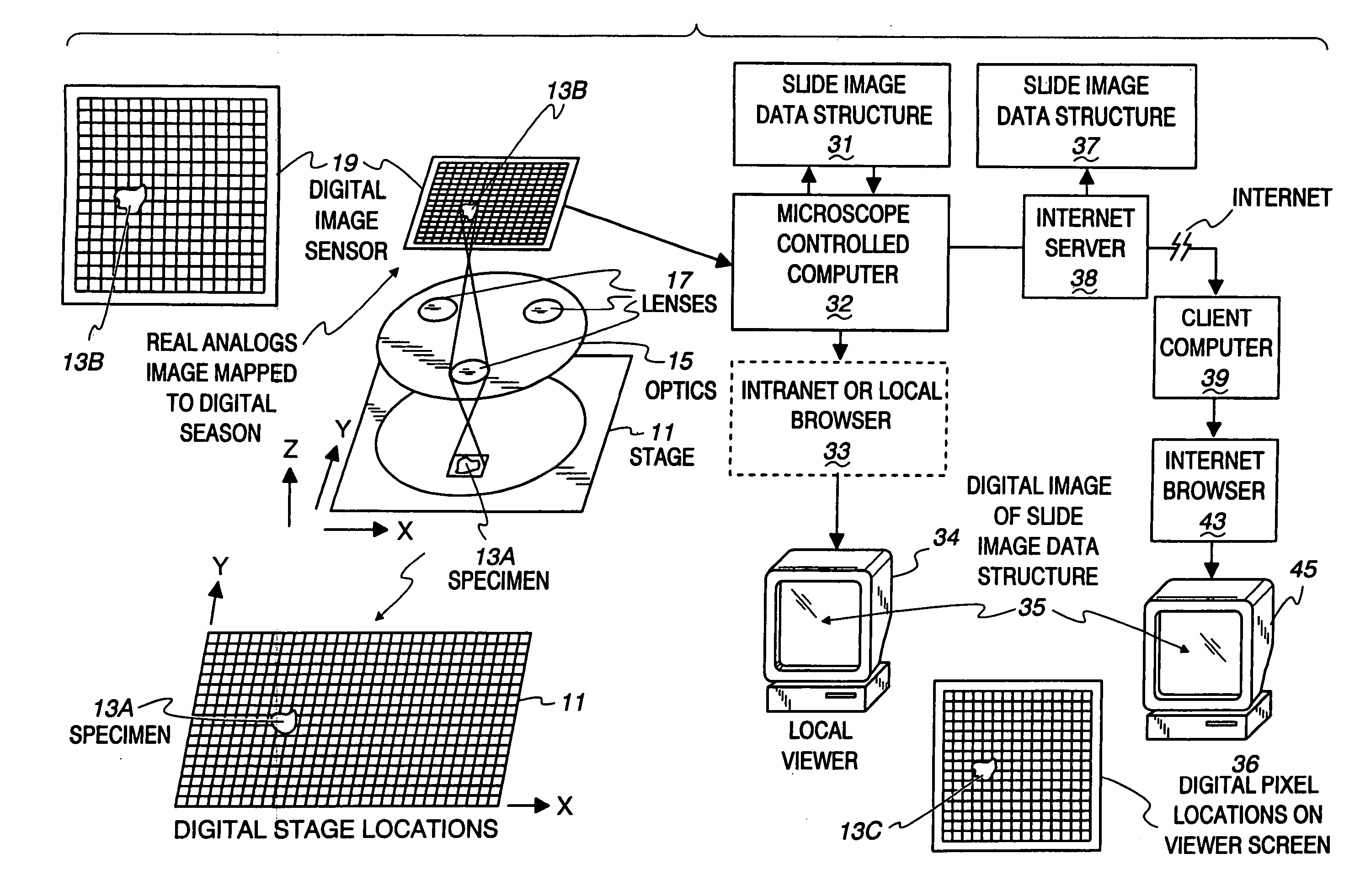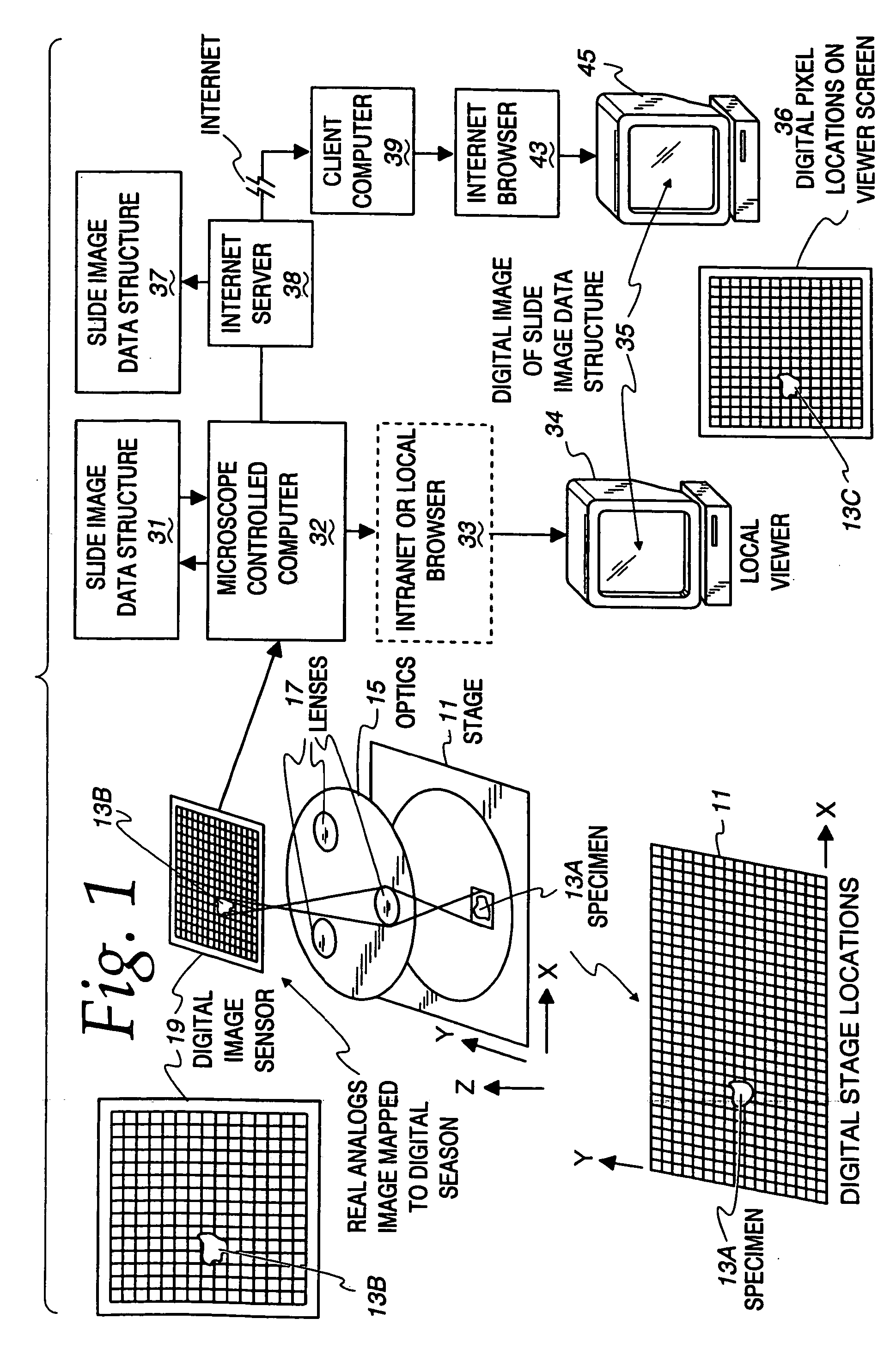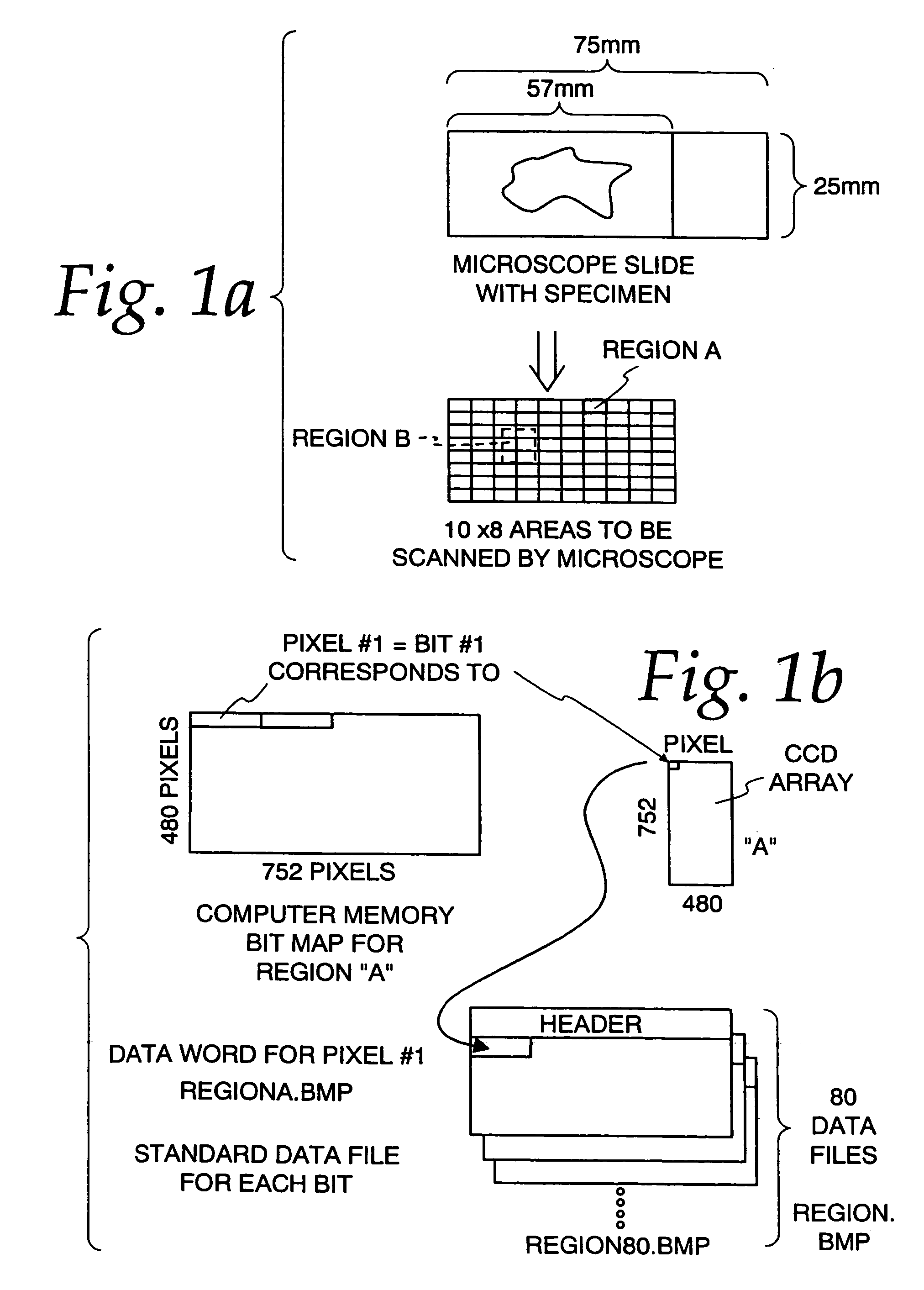Method and apparatus for creating a virtual microscope slide
a virtual microscope and microscope technology, applied in the field of virtual microscope slides, can solve the problems of inability to construct an optical image sensor large enough to cover the entire image area, limited view range of pathologists, and large field of view of magnified objects, etc., and achieve the effect of reducing the number of image pixels stored and high resolution
- Summary
- Abstract
- Description
- Claims
- Application Information
AI Technical Summary
Benefits of technology
Problems solved by technology
Method used
Image
Examples
Embodiment Construction
[0061]FIG. 1 is a block diagram of a system according to the invention for creating, and transmitting over an intranet or via the Internet a virtual microscope slide, i.e. interrelated data structures and display procedures depicting at multiple resolutions, images of a specimen on a microscope slide. The system includes a microscope with a digital platform for supporting the microscope slide. Digital platform or stage 11 has been specially calibrated to include a large number of increments for locating portions of specimen images with high precision. After calibration and initial registration of stage 11 in the microscope setup, a microscope slide or other substrate with a specimen to be scanned is placed on stage 11.
[0062]For exemplary purposes, the creation of virtual microscope slide specimen according to the invention will be described with respect to a breast cancer specimen. The first step in creating a data structure according to the invention is to establish a macro image o...
PUM
| Property | Measurement | Unit |
|---|---|---|
| compression ratios | aaaaa | aaaaa |
| data structure | aaaaa | aaaaa |
| area | aaaaa | aaaaa |
Abstract
Description
Claims
Application Information
 Login to View More
Login to View More - R&D
- Intellectual Property
- Life Sciences
- Materials
- Tech Scout
- Unparalleled Data Quality
- Higher Quality Content
- 60% Fewer Hallucinations
Browse by: Latest US Patents, China's latest patents, Technical Efficacy Thesaurus, Application Domain, Technology Topic, Popular Technical Reports.
© 2025 PatSnap. All rights reserved.Legal|Privacy policy|Modern Slavery Act Transparency Statement|Sitemap|About US| Contact US: help@patsnap.com



